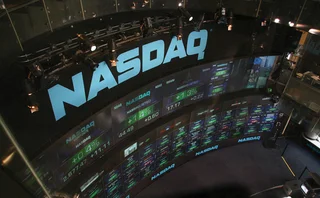
Efforts to mitigate risk are paying off

The resounding theme of events in the past week is that more needs to be done to mitigate operational risk. That said, many steps have been made in the wider market...
A survey of banks and institutional investors released by the International Swaps and Derivatives Association last week (April 22) confirmed the sharp rise in the use of collateral as a risk mitigation tool last year in the wake of the worsening financial crisis. Over-the-counter derivatives traders have increased their use of collateral by 86% in the past year, with an estimated $4 trillion of collateral in circulation at the end of 2008, up from $2.1 trillion at the end of 2007. Cash represented 84% of collateral received and 83% of collateral delivered.
"Isda's margin survey indicates that, amid the volatility in the financial markets, collateral management programmes continue to expand, covering increased trade volumes and credit exposures," said Robert Pickel, executive director and chief executive at Isda, in the report.
The survey estimates more than 150,000 collateral agreements are now in place and respondents predict growth of 26% in 2009.
Similarly, as reported by Risk News, multilateral tear-up efforts continue to work, with notional outstanding reduced by several trillion dollars, according to the industry body. Isda said trading in interest rate derivatives "remains solid", but portfolio compression efforts meant notional outstanding had fallen to $403.1 trillion by the end of 2008, down from $464.7 trillion at the end of June. Credit default swaps saw a similar decline, with notional outstanding falling from $54.6 trillion to $38.6 trillion by the end of last year. Equity derivatives, a smaller market, fell from $11.9 trillion to $8.7 trillion outstanding.
Isda estimated that, at the end of 2008, derivatives holders had a net total credit exposure of $2.7 trillion.
The latest figures represent success for Isda and other market participants in their efforts to reduce notional outstandings by tearing up offsetting trades. The second half of 2008 saw interest rates outstanding, by far the largest market, fall for the first time. Outstanding credit default swaps (CDS) notional continued to fall, after dropping in the first half of 2008 for the first time in the market's history.
Isda's changes to CDS contracts, which came into force earlier this month, are expected to increase tear-up activity further in the CDS market.
Comments? Email saima.farooqi@incisivemedia.com
Only users who have a paid subscription or are part of a corporate subscription are able to print or copy content.
To access these options, along with all other subscription benefits, please contact customer services - www.fx-markets.com/static/contact-us, or view our subscription options here: https://subscriptions.fx-markets.com/subscribe
You are currently unable to print this content. Please contact customer services - www.fx-markets.com/static/contact-us to find out more.
You are currently unable to copy this content. Please contact info@fx-markets.com to find out more.
Copyright Infopro Digital Limited. All rights reserved.
You may share this content using our article tools. Printing this content is for the sole use of the Authorised User (named subscriber), as outlined in our terms and conditions - https://www.infopro-insight.com/terms-conditions/insight-subscriptions/
If you would like to purchase additional rights please email info@fx-markets.com
Copyright Infopro Digital Limited. All rights reserved.
You may share this content using our article tools. Copying this content is for the sole use of the Authorised User (named subscriber), as outlined in our terms and conditions - https://www.infopro-insight.com/terms-conditions/insight-subscriptions/
If you would like to purchase additional rights please email info@fx-markets.com
More on Operational Risk
Outlook for e-FX: opportunities and risks for banks
As electronification spreads into new areas of FX trading, banks are under pressure to digitise more of their offerings to remain competitive. The race is now on to automate pricing, trading and hedging in areas such as non-deliverable forwards, swaps…
Rise of workflow as the buy side's low-key hero
The goal is to build a “single source of truth” to cut costs, make better trading decisions and react quickly to new regulation
Nasdaq default came at time of mass margin breaches
CCP's clearing members incurred 49 margin breaches as of end-September
LCH shakes up compression vendor fee structure
Proposals follow criticism that the current regime favours TriOptima
Tokenisation: the flipside of the coin
Turning traditional assets into digitally traded data is much harder than it seems
LCH to clear over-the-counter FX NDFs in Japan
Until now, Japanese-based entities relied on overseas subsidiaries to clear FX trades
LCH launches FX options clearing
The first clearing service for deliverable FX is available initially for eight currency pairs
CLS rolls out monitoring tool for asset managers
Market participants gain real-time view of the trades they submit to CLS







